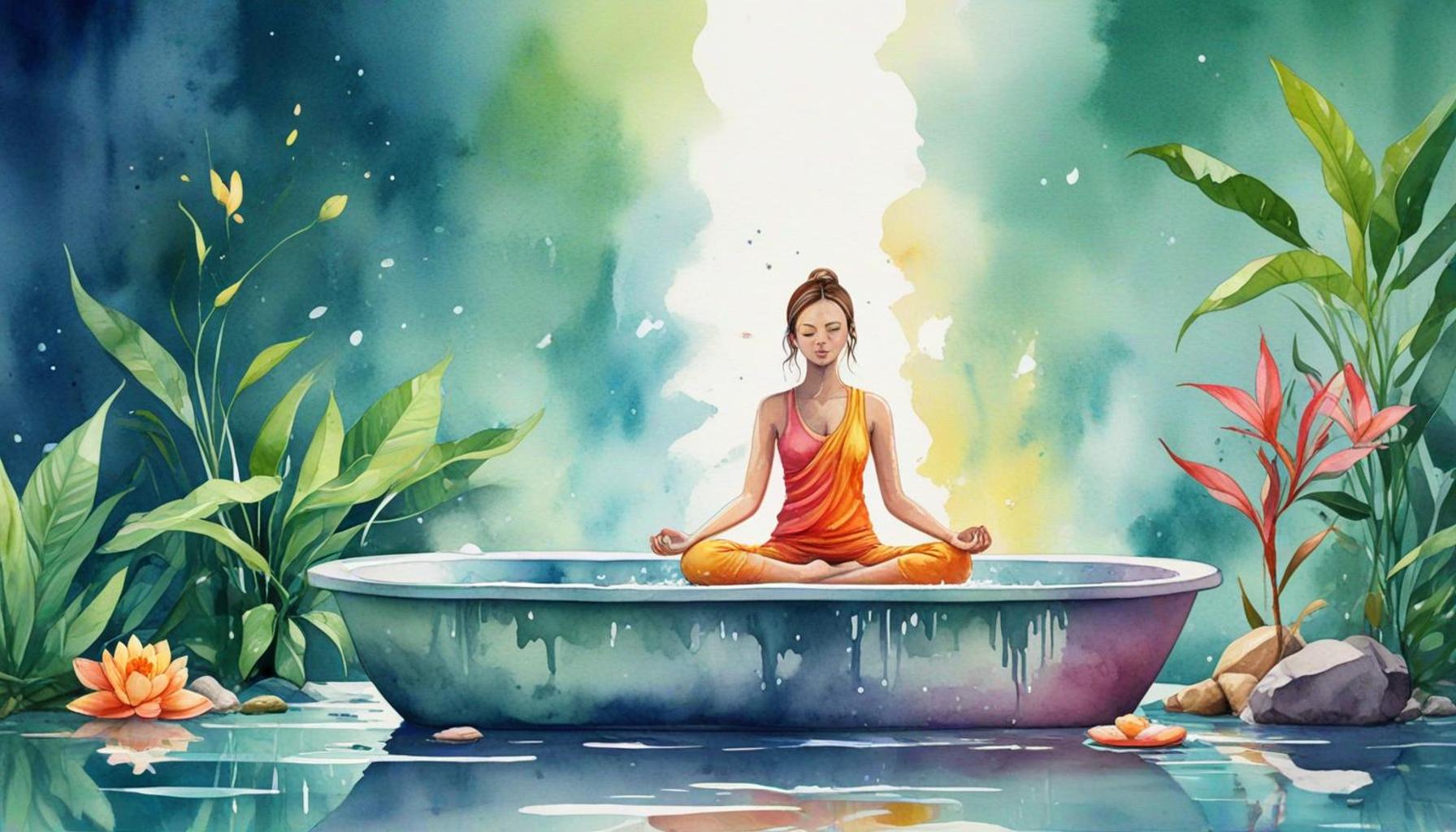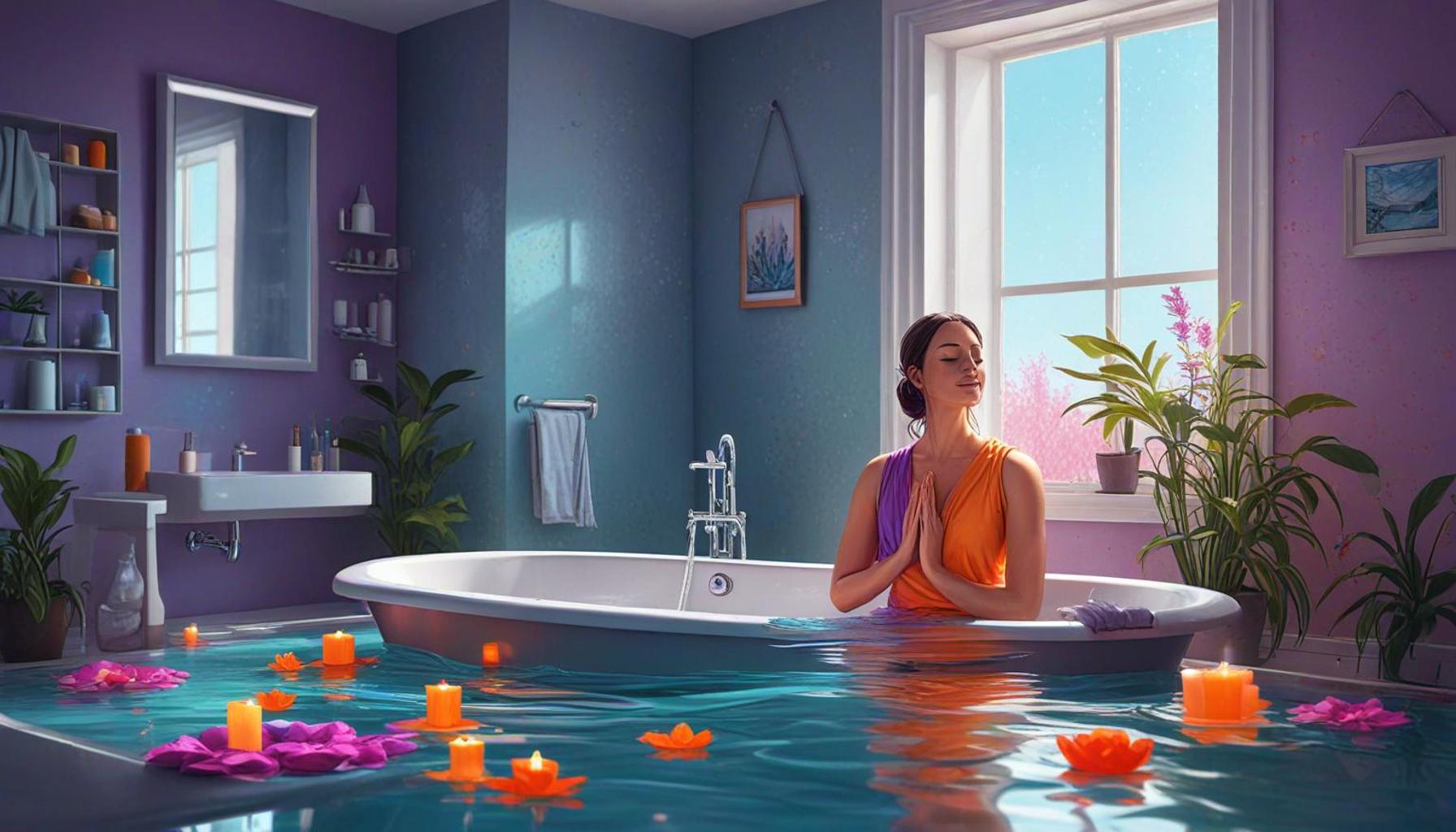Unlock Bath Meditation Rituals to Reduce Daily Stress Effectively

Unlocking the Art of Bath Meditation
In today’s fast-paced world, stress can feel like a constant companion, impacting our mental and physical well-being. The tranquility of a bath can be transformed into a powerful meditative experience, transforming routine hygiene into a sanctuary for relaxation and mindfulness. This fusion of bathing and meditation creates a unique ritual that not only soothes the body but also calms the mind.
The Importance of Bath Meditation
As more people seek effective ways to navigate daily pressures, the practice of bath meditation is gaining traction. This ritual allows individuals to leverage the healing properties of water while cultivating mindfulness. But how does one elevate a simple bath into a transformative practice?
Discovering the Top 5 Bath Meditation Techniques
In this article, we will explore the Top 5 bath meditation techniques that can effectively reduce stress and enhance your overall wellness. From incorporating essential oils to practicing breath control, these methods will give you the tools needed to turn your bath time into a rejuvenating experience.
LEARN MORE: This related article may interest you
The Art of Shower Meditation: Transforming a Daily Ritual into a Stress-Relieving Sanctuary
In the relentless whirlwind of modern life, where every minute feels accounted for, carving out moments of peace might seem like an unattainable dream. However, one unexpected oasis for tranquility awaits in a place we often overlook—our bathrooms. The act of showering, routinely considered mundane, has the potential to blossom into a nourishing meditation practice. Here, we delve into the top five techniques to harness the calming power of shower meditation and significantly alleviate daily stressors. From engaging the senses to cultivating gratitude, learn how to transform this daily ritual into a serene escape.

5. Curate a Relaxing Environment
Crafting a relaxing environment is the foundational step towards a successful shower meditation. Your bathroom should be an inviting space that immediately signals comfort and peace. This begins with maintaining cleanliness and optimal lighting. Soft, ambient lighting—achieved through candles or dimmable bulbs—can help shift the mood from functional to soothing. Fill the air with the scents of aromatherapy shower bombs. Lavender, chamomile, or eucalyptus can have calming effects, promoting relaxation.
Moreover, background music or sounds of nature, like ocean waves or rain, can assist in creating a tranquil atmosphere. The temperature of the water also plays a pivotal role; warm water is known to soothe sore muscles and encourage relaxation, while cool water can refresh and reinvigorate. This sensory cocooning allows you to focus solely on the shower experience, creating a personal sanctuary away from the day’s demands.
4. Embrace the Power of Mindfulness
Mindfulness is the practice of being fully present and engaged in the current moment, and it is a cornerstone of shower meditation. When you step into the shower, try to anchor yourself in the present by focusing on the subtle sensations around you. Notice the temperature of the water, the pattern of droplets hitting your skin, and the aroma of your soap or shampoo. These experiences are enriched by letting go of external worries and distractions, anchoring you firmly in the here and now.
Begin by engaging your senses in sequence: feel the water cascade over your body, witness the steam swirl gracefully, and enjoy how the body wash scent influences your mood. This thorough sensory involvement results in a deep sense of calmness and rootedness, a necessary antidote to the stress and frenzy of daily life.
3. Utilize Visualization Techniques
Incorporate visualization techniques to deepen your meditation experience. Imagery can serve as an effective tool to transport your mind to a peaceful setting while standing beneath the shower. Picture yourself in a calming location, such as a serene beach during a gentle sunset, a shady forest clearing, or a summit overlooking expansive vistas.
Visualization helps create a mental separation from anxiety and stress. Further, imagine the water carrying away your stress—akin to dirt being rinsed from your body—reinforcing the cleansing theme. This practice helps incorporate mental and emotional cleansing into your daily hygiene routine.
2. Integrate Breathing Techniques
Breathing techniques are integral to meditation and can significantly enhance your shower experience. As you stand under the water, focus on your breathing—taking deep, slow, rhythmic breaths. Inhale fully through your nose, allowing your chest and abdomen to rise and fill with air. Then, exhale gently through your mouth, allowing tension to release.
Engaging in deep breathing while showering fosters a profound tranquility, reducing heart rate and lowering cortisol levels, the stress hormone. By syncing your breath with the steady flow of water, you can achieve a deeper meditative state that restores peace and balance. Aim to engage in this practice for a few minutes, gradually extending the duration as you grow more comfortable.
1. Transform the Shower into a Ritual of Gratitude
Consider evolving the shower into a daily ritual of gratitude, the most transformative approach to shower meditation. During this time, reflect on the positives in your life—people, experiences, or achievements that bring you joy and fulfillment. Gratitude has been shown to significantly enhance overall well-being and reduce stress and anxiety.
Combining the physical warmth of a shower with a grateful mindset can foster an uplifting emotional state, reinforcing resilience against daily pressures. This trifecta of warmth, water’s flow, and gratitude can fortify your spirit and instill a sense of contentment and peace.
By routinely practicing gratitude in the shower, you nurture a mindset that not only curbs stress but fortifies mental resilience. Harness the art of meditation in the shower, opening pathways to tranquility and mindfulness. Begin today by exploring these techniques and elevate your shower routine into a cherished moment of rejuvenative peace.
| Category | Details |
|---|---|
| Mindfulness Enhancement | Engaging in a bathing ritual promotes mindfulness, allowing individuals to focus on the present moment while enjoying the soothing sensation of water. This practice can significantly diminish racing thoughts that often accompany feelings of stress. |
| Aromatherapy Benefits | Incorporating essential oils or scented bath products can create a sensory experience that not only enhances relaxation but also stimulates the brain’s limbic system, which governs emotions. Scents like lavender and chamomile are particularly effective for stress relief. |
| Physical Relaxation | Warm water baths naturally ease muscle tension and promote blood circulation, which helps lactate lactic acid built up from stress-related tension. This physiological effect aids in a profound sense of relaxation and well-being. |
| Time for Reflection | The solitude and warmth of bath time serve as an ideal opportunity for self-reflection. Individuals can engage in gentle meditative practices, allowing for clarity of thought and emotional regulation, which are vital for managing daily stressors effectively. |
The diverse aspects highlighted in the table truly illustrate how integrating a mindful bathing ritual into one’s routine can elevate well-being and combat stress. Exploring these categories can open doors to new habits, fostering a profound sense of peace and rejuvenation. Each element, from mindfulness to the unique benefits of aromatherapy, invites readers to reconsider how they can transform a mundane activity into a deeply restorative practice.
LEARN MORE: This related article may interest you
Frequently Asked Questions about Meditation in the Bath
What is the concept behind meditation in the bath?
Meditation in the bath combines the therapeutic aspects of water with mindfulness practices. It is believed that the warmth of the water helps in relaxing muscles and easing tension, making it easier for individuals to achieve a meditative state. This practice can reduce daily stress by allowing the bather to escape from distractions and focus solely on their breathing and immediate sensations. Studies have shown that combining physical relaxation with mental calmness can effectively lower stress levels.
How does taking a bath differ from other forms of meditation?
While traditional meditation might require a quiet room and a specific posture, bath meditation offers a more sensory experience. The sound of water, its warmth, and even the aromatic scents from bath oils or candles can enhance the meditative process. This multisensory involvement can make it easier for some to disconnect from their thoughts and concentrate on the present moment. Moreover, the intimate and secure environment of a bathroom may help individuals feel more comfortable and relaxed compared to a conventional meditation setting.
Can bath meditation be our only stress-reducing technique?
While bath meditation can be a powerful tool for stress reduction, experts suggest it’s best used as part of a broader stress-management strategy. Incorporating regular physical activity, a balanced diet, and other mindfulness practices, such as yoga or breathing exercises, can amplify the benefits. Bath meditation offers a unique combination of both physical and mental relaxation. Yet, relying solely on any single technique may not address all aspects of one’s stress.
How long should a meditation bath last for optimal benefits?
The duration of a meditation bath can vary according to individual preference, but a session generally lasts between 15 to 30 minutes. The key is to listen to your body and mind; overstaying might lead to discomfort or overheating. It’s essential to ensure that the time spent is relaxing and fulfilling, rather than adhering strictly to a timeframe. Regular sessions can help establish a lasting routine, enhancing the overall benefits over time.
Are there any precautions to take when practicing meditation in the bath?
Yes, there are several precautions that one should keep in mind. Firstly, ensure the water temperature is comfortable to prevent overheating and dehydration. Secondly, it’s crucial that the bathroom environment is safe and free of slip hazards. Adding too many oils or soaps may cause the tub to be slippery. Lastly, those with heart conditions or other health issues should consult a doctor before indulging in prolonged hot baths. Safety and comfort should always be prioritized to guarantee a beneficial and pleasant meditation experience.
YOU MAY ALSO LIKE: Read this other article
Conclusion: Embracing the Therapeutic Power of Shower Meditation
As modern life continues to accelerate, finding moments of peace is crucial for maintaining mental well-being. The ritual of shower meditation emerges as a simple yet effective way to integrate mindfulness into our daily routines, offering an oasis of calm amidst the chaos. Throughout this article, we’ve explored how this practice combines the therapeutic aspects of water with meditative techniques to profoundly reduce daily stress levels.
Key takeaways highlight that shower meditation facilitates a multi-sensory experience, fostering relaxation through attention to sensations such as the sound of water and the warmth of steam. This ritual not only purifies the body but also refreshes the mind, cultivating a sense of inner clarity. Moreover, by anchoring thoughts in the present moment, practitioners can disrupt the cycle of stress, preventing it from spiraling into anxiety.
Another significant aspect is the accessibility of this practice. Unlike other forms of meditation which may require dedicated spaces or time, shower meditation seamlessly fits into daily routines, making it an attractive option for those with busy schedules. It transforms an everyday activity into an opportunity for self-reflection and renewal, demonstrating that mindfulness can be achieved in the simplest settings.
As stress remains a pervasive element of our daily lives, recognizing the shower as a meditative space underscores the importance of finding balance and tranquility wherever possible. By embracing the art of meditation in the shower, we witness a powerful reminder that serenity often lies within the ordinary rituals we perform each day. This practice encourages individuals to explore further into the realm of mindfulness, widening the horizons for personal well-being and holistic health.



